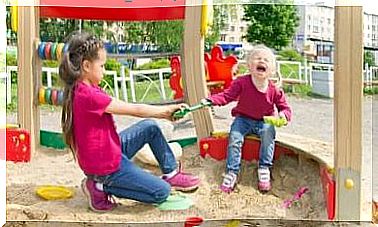What You Should Know About Quiet Kids

Generally speaking, they are children with little or no conflict. They have a relaxed attitude, which does not always imply passivity on their part. Quite simply, calm children know that, for the vast majority of issues, confrontation and negative emotions are not necessary.
The calm and patience with which they develop make them very pleasant. Although they are not usually extroverted.
Getting close to them can be a bit difficult, as their calm may give the impression that they don’t want to interact, but on the contrary, relating and communicating with others interests them. Remember that effusiveness is not always the clearest expression of interest.
If your child is calm, we recommend that you educate him, without being overprotective, encouraging him to express his emotions, not pressuring him and, above all, providing the affection he needs. In this way, you will help him to have all the necessary tools to achieve integral development that will give him advantages throughout his life.

Characteristics of the behavior of calm children
1. Not necessarily shy
Being quiet and being shy don’t always go hand in hand. In the case of calm children, what happens is that they tend to be a little more reserved, but once they are in an environment of trust, they express themselves with complete spontaneity.
On the other hand, quiet children have a cautious attitude. They attend to new situations to see what will happen before facing them directly, but once they are in control of situations, there is no stopping them.
2. They are always listening and assimilating information
Don’t confuse the quiet nature of children with the fact that they don’t pay attention to you when you talk to them. They are very observant people who tend to pay attention to everything around them and, as a result, internalize many feelings and thoughts.
3. Don’t usually talk to strangers
If you notice that your child has difficulty talking to strangers, it’s best not to force him to face these situations, as they can be really uncomfortable.
Help him, in a subtle and empathetic way, to overcome this difficulty and make him, little by little, leave his comfort zone. While talking to a random person isn’t your priority, you should encourage them in everyday situations, such as ordering food in a restaurant or candy in a store.
4. Many things happen behind this silent exterior
As the little ones grow up and start to read and write, it’s a good time to understand that many things happen inside the minds of calm children.
Peaceful children will not always talk about all their thoughts and feelings with their parents. That’s not bad, but you need to keep some attention. To help these children feel more comfortable, you can encourage them to write a journal or create their own stories, to realize that perhaps they have more knowledge than they expected.

5. Don’t feel the need to be the center of attention
Quiet children don’t have the need to monopolize attention. They thrive most on personal interaction. As a result, they are not attracted by the idea of being the center of social situations.
6. They need to tell you about their hopes and dreams
Quiet children want someone to really listen to them, without judging them straight away or acting with recriminations and advice. They want to have a relationship with their teachers, coaches and other adults in their lives. Therefore, the opportunity to approach them and listen to what they have to say and transmit should not be wasted.
Try to talk to them about the things they think are important, not just the ones that matter to you. The best you can do with calm children is to find out what motivates them and invite them to talk about it.









